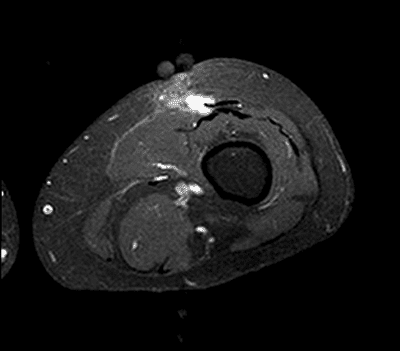What Happens During Your First Orthopaedic Oncology Appointment?
- What Are Benign Bone and Muscle Tumors?
- What Are Malignant Bone and Muscle Tumors?
- Why Is Non-invasive Diagnosis Paramount to Treatment Success?
When general medical practitioners uncover or suspect tumors or cysts, the next logical step is to refer their patients to an orthopaedic oncologist. So, what happens during your first orthopaedic oncology appointment?
Orthopaedic oncology is a subspecialty in orthopaedic medicine specializing in the diagnosis and treatment of various tumors (both benign and malignant) of bones, soft tissues, and musculoskeletal nerves.
Craig P. Jones, M.D., a board-certified orthopaedic oncologist at Orlando Orthopaedic Center, understands the complexity and at times, confusion, associated with being referred to another doctor after a tumor diagnosis.
According to Dr. Jones, a patient’s initial appointment is more about fact-finding and confirming one’s condition than it is about planning surgical or other treatment procedures.
“At the first appointment, we do a full examination and see what we can see,” says Dr. Jones. “We’ll do X-rays if you don’t already have them, and if you do have X-rays, we’ll examine them and may even repeat them to see if there’s a change. We wouldn’t typically think about a biopsy during the first visit without first performing our initial evaluation.”
A biopsy is a sample of tissue taken from the body in order to examine it more closely and determine the presence or magnitude of a disease.
“If there is ultimately to be surgery, we would need to carry out our preoperative evaluation by doing other tests such as a bone scan, MRI, CT scan, blood work, and other X-rays,” explains Dr. Jones.
What Are Benign Bone and Muscle Tumors?

Orthopaedic Oncology MRI Scan
Benign, or non-threatening, bone tumors generally develop in adults under 30. They can present in any bone but are most commonly seen in the leg and hip bones. Benign tumors can be detected by a painful, persistent lump that can be felt, or they may go unnoticed until they damage the bone structure and cause a fracture.
Common benign bone tumors include:
- Bone Cysts: benign lesions which develop in both children and adults
- Enchondroma: a non-threatening tumor arising inside the bone causing extreme pain
- Osteochondroma: the most prevalent benign tumor that typically manifests at the end of a long bone such as the femur or tibia
- Chondroblastoma: a rare and destructive tumor that occurs near the joint
- Giant cell tumor: a recurring tumor that erodes the bone near a joint and expands into the soft tissues
The two primary forms of non-threatening muscle tumors are known as leiomyomas and rhabdomyomas. Leiomyomas also called fibroids, most commonly occur in the lining of blood vessels and can be found in the uterine wall. Rhabdomyomas infrequently occur in the soft muscle tissues.
What Are Malignant Bone and Muscle Tumors?
Malignant, or harmful, bone tumors are more uncommon than benign tumors but possess a dangerous capacity to fan out from their original location via the blood vessels and through the lymphatic system, often ending up in the lungs.
Common cancerous bone tumors include:
- Osteosarcoma: typically develops in children during periods of rapid growth in the arms, legs, and pelvis. It requires aggressive treatment
- Chondrosarcoma: generally occurring in older adults, chondrosarcoma is the second most common form of bone cancer and affects the cartilage cells
- Ewing’s sarcoma: the second most common form of bone cancer in children, Ewing’s sarcoma affects the cavities of the bones; its source is unknown
Cancerous muscle tumors include leiomyosarcomas, which typically show up in the organs, blood pathways, and deep inside the abdomen, and rhabdomyosarcomas, which affect healthy muscle tissue cells.
Why Is Non-invasive Diagnosis Paramount to Treatment Success?
For patients to achieve the best results, Dr. Jones stresses the importance of proper testing before deciding on any course of action.
“The reason we like to do these tests before any intervention, either a needle biopsy or open biopsy, is that we’re trying to determine what the tumor looks like before any intervention,” he says. “If you do a biopsy or other surgical procedure and then do these tests, the tests will reflect the intervention, through scarring, swelling, and bleeding from surgery.”
The best course of treatment always begins by assessing the scope and quality of the tumor before distorting it.
“What we’re trying to determine is what the tumor looks like prior to any aspect, anything that might disturb it,” says Dr. Jones. “We want to look at these tests prior to any surgical procedure so that we might plan the safest and best way to perform a biopsy if a biopsy is needed.”


